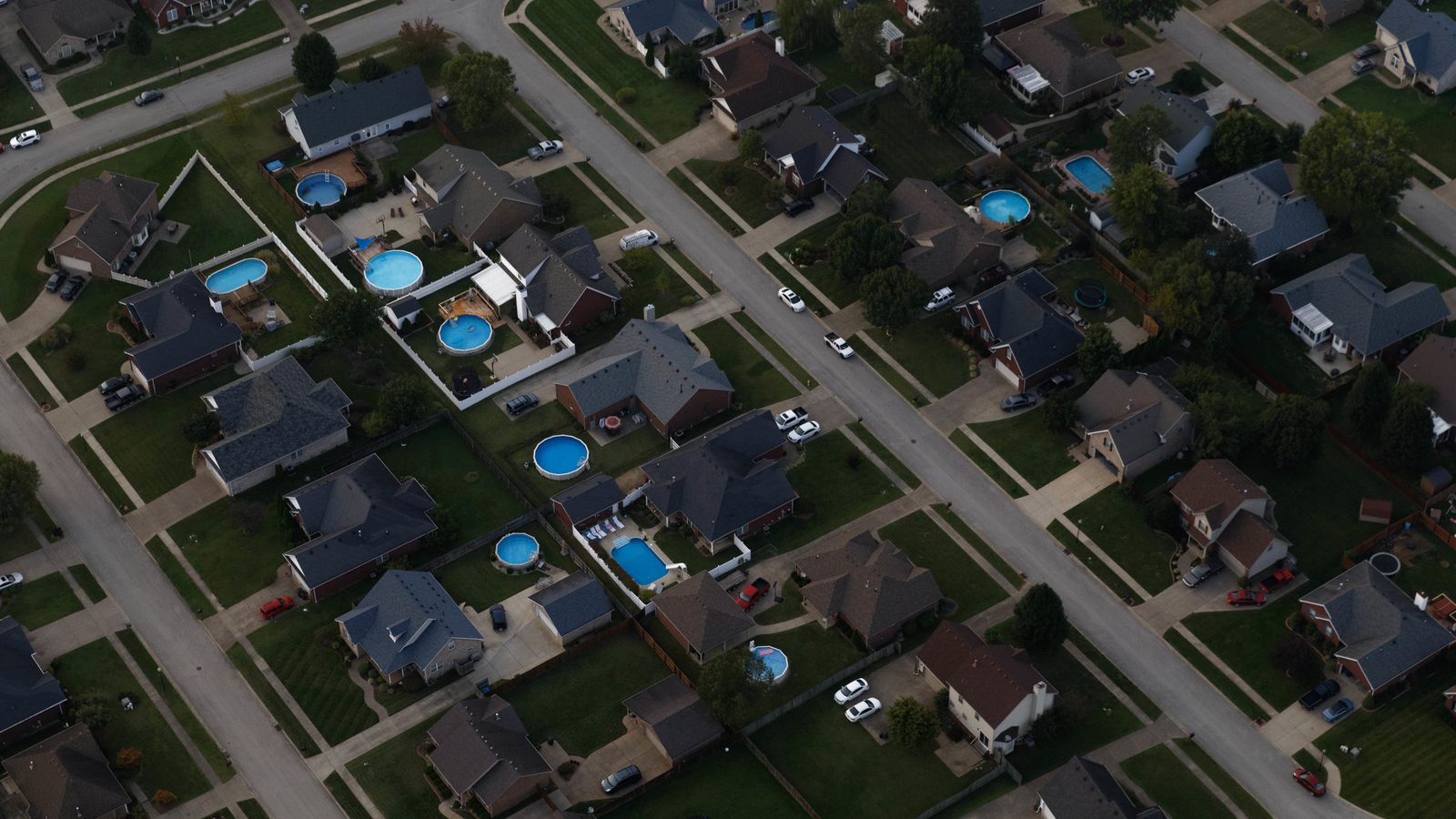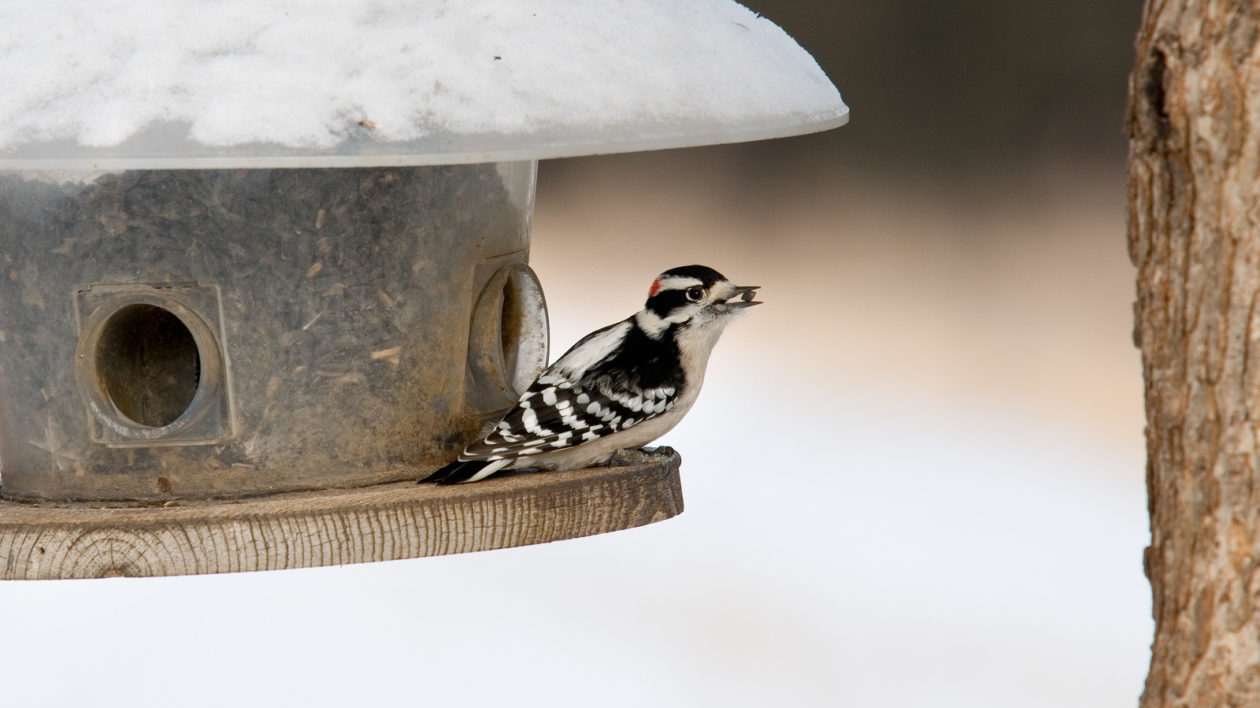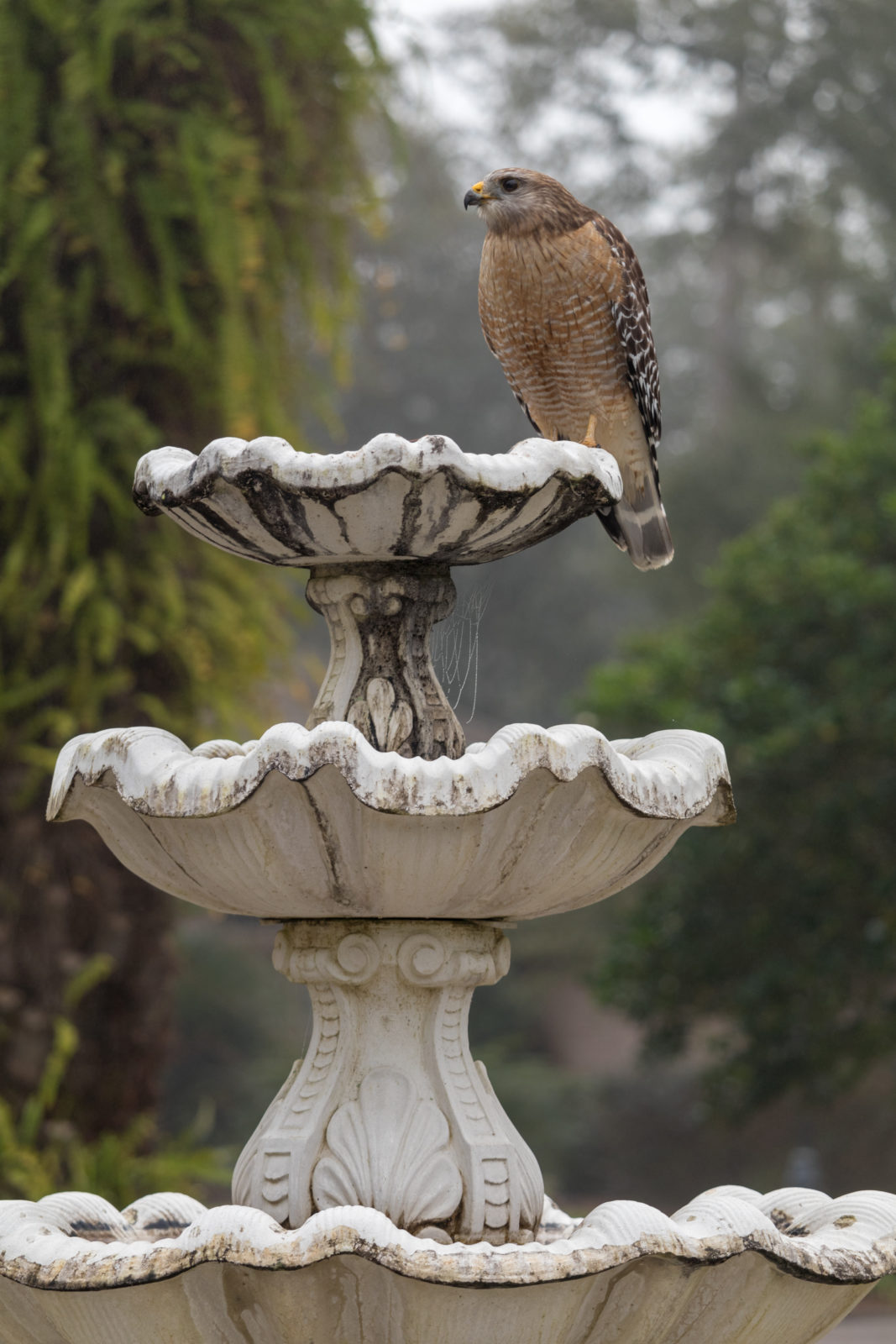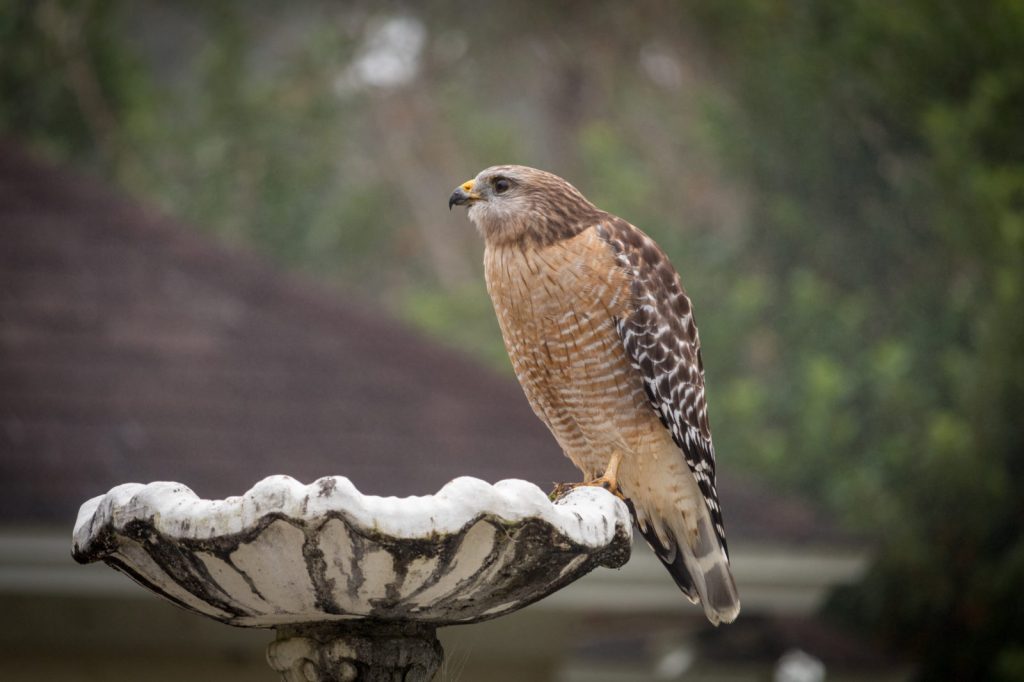Yesterday, I gazed out the window of my home office during a meeting, watching California quail and house sparrows forage beneath native sumac. Suddenly, the bush seemed to explode, with birds flushing in every direction.
A second later, a Cooper’s hawk deftly landed underneath the shrubbery. It began hopping around attempting to snag one of the remaining quail that hunkered down instead of flushing. But the hawk was just a little too late.
Over the years, I’ve noted more frequent sightings of both Cooper’s and sharp-shinned hawks around the neighborhood. You’ve probably noticed the same thing. Across the United States, these two hawk species – both similar looking and in the genus Accipiter – have increasingly colonized urban areas.
A new paper in the Proceedings of the Royal Society B sought to “identify factors that determine the occupancy, colonization and persistence of Accipiter hawks in a major metropolitan area.” In the course of their study, the researchers from the University of Wisconsin-Madison and Cornell Lab of Ornithology found that in the 1990s Accipiter hawks occupied 26 percent of sites around Chicago. After two decades, they occupied close to 67 percent of sites.
It’s a trend reported (often via citizen science) around the country. And a big part of it is the bird feeder in your backyard.
The Return of Raptors
By the mid-20th century, many raptor species, including Cooper’s and sharp-shinned hawks, had declined precipitously. Direct persecution and pesticides had taken a heavy toll. Decades of protection have caused populations to rebound, leading raptors including accipiters to reclaim habitat.
But as the birds spread, they found a new world: one of growing cities. One might initially conclude that predators would not find this new world to their liking, as it was covered in concrete and buildings instead of forests. And that’s certainly true for many wildlife species.

But, as the researchers note in their recent paper, cities present a mix of habitats, including backyards, parks and golf courses with plenty of space. These “novel ecosystems” provide opportunity for cover and also, often, for ample food supplies.
The researchers documented the spread of the two hawk species in Chicago via observation through remote sensing data and Project FeederWatch, a citizen science initiative that has conservationists record sightings throughout the winter.
Initially, the hawks colonized areas outside the city. But they increasingly spread to more and more urbanized areas. The researchers documented usage of areas defined by what they call impervious features: roads, buildings, sidewalks. The more impervious the area, generally, the less “green” habitat.
Initially, hawks avoided these highly developed zones. But eventually, as long as there was sufficient prey, they colonized even the downtown. Over the past two years, hawks went from the city fringes to occupying much of the metropolitan area.
The researchers hypothesized that reforestation would play a role in hawk recolonization. But it didn’t. In fact, wintering hawks preferred areas with fewer trees, perhaps to better hunt prey.

The Hawk at the Feeder
Bird feeding is a hugely popular urban pastime. More than 40 percent of U.S. households feed their backyard birds.
That creates an abundance of birds, concentrated in specific, predictable areas. A predator’s bonanza.
The researchers found that the predator’s persistence in urban areas was most influenced by abundant prey. Based on citizen science and other research across the country, hawks have taken advantage of the bounty of bird feeders across the country.
Cities are rapidly changing. The novel ecosystems they create are also highly dynamic and, often, poorly understood. Songbirds, like northern cardinals, may even expand their range due to feeders. Then predators recolonize, shifting species behavior and abundance.

The researchers cite studies in England that show the recolonization of Eurasian sparrowhawks in cities caused a dramatic decline in house sparrows as well as other species commonly found at bird feeders. The sparrows had exploded in population due to the free food sources and lack of predators. When the predators returned, it caused an immediate shift in the urban ecosystem. It’s not so different, really, than what happened when wolves were reintroduced to Yellowstone and found a park with an over-population of elk.
The researchers note that similar shifts in prey abundance might be expected in Chicago and other cities. Some studies have found that urban hawks are feeding heavily on European starlings, house sparrows and pigeons – all non-native species – so they could actually reduce competition for native songbirds.
Do bird feeders change migration patterns? At least one study found that sharp-shinned hawks on the East Coast were less likely to migrate due to the abundance of bird feeders.
Research into Urban Ecosystems is Vital for the Future of Conservation
Clearly, research into urban ecosystems is vital for the future of conservation. Understanding how species interact, and how species use new habitats, can help better design parks and refuges. Perhaps endangered animals that many consider incompatible with cities actually could recolonize urban areas if given a chance. After all, 50 years ago no one considered the Cooper’s hawk to be an urban bird.
And let’s not forget a key factor in helping scientists understand urban wildlife: you. The observations you make at your bird feeder, at the city park and along a greenbelt trail help researchers understand novel ecosystems and their wild inhabitants. While your observations may seem anecdotal, when combined with millions of other observers, they add up to a significant data set.
So, yes, you really are seeing more hawks at your bird feeder. Enjoy the show this winter: the restoration of the predator-prey dynamic to the urban wild.




I have seen several peregrine falcons in my yard in Charleston, WV. I can always tell when something is wrong by the urgent calls from the other birds in my yard. I look outside to see what has caused the ruckus. I immediately go outside and clap my hands to get them out of my yard.
We, in Carlsbad California, are definitely seeing a hawk dive into our bird feeder area hanging from the Coral Tree. The hawk is different shades of gray. It’s very fast and aggressive, but so far unsuccessful in its attacks. We’ve fed little birds for years, but the appearance of the hawk is relatively recent (in the last 6 months). Any comment on the type of hawk?
I even used to feed the crows, but had to stop to protect our Bearded Collies. One morning, as the crows were feeding, 2 very large and healthy coyotes came walking down the hill to check out the bread. They jumped a 6-ft. fence to inspect whatever brought about 20 crows to our yard.
Thank you for your very informative and interesting article that made us realize we’re experiencing things others throughout our country are.
My husband and I recently saw what we think was a juvinile red shouldered hawk in our backyard stalking our feeders. We had only seen a hawk in our yard once before a few years ago when one landed on our occupied bluebird house, gave us quite a scare.
We live in Southern Maryland.
thank you for sharing.in nashville area”s in east nashville not to far from river,see beautiful hawks daily!love it every time!my brother lives next door,3 weeks ago he was working in his backyard,a bald Eagle flew down eye level with him,he was speechless!its amazing to see birds of prey.
I frequently have a Cooper’s Hawk that hunts near my feeders and also my birdbath and water hole. He does hang around the neighborhood as we attract pigeons with 2 storied homes. We also have many doves and some quail. Alas, He also got the tired migrating Yellow billed Cuckoo that spent a few days in my yard. That did make me sad. However, a wildlife scientist came and got the remains from my freezer. It will be used for science education. Barbara in Tucson
We have Cooper’s Hawks nesting in our yard every summer, and wiping out our smaller birds. They don’t seem to bother our Lesser Goldfinches and the number of hummingbirds nesting in our yard have increased. There are studies (can’t remember citation) showing that hummingbirds prefer nesting near Cooper’s Hawks.
That is fascinating. Perhaps a subject for a future blog!
How does one participate in submitting observations; are there rules about about observing-time of day, frequency of observation, etc. do households need to enroll?
There are numerous ways you can share your observations. Check out the Great Backyard Bird Count and Project FeederWatch for starters. Both have rules for sharing observations but they are very user-friendly. There are a number of apps that allow you to record sightings and many do not have restrictions on time of day, frequency, etc. They allow you to record observations wherever and whenever they occur. I recommend iNaturalist as it allows you to record sightings of any species, not just birds.
Hi Matthew,
I live in Massachusetts near the RI border. I feed birds in our yard. I keep the hawks away through a deal I made with the local crows: I feed the crows; they chase the hawks away!
Chipmunks also increase in density around bird feeders. Chipmunks rarely tolerate others of their kind around bird feeders. They actively chase each other frequently which provides a distraction that my
Coopers Hawk takes advantage of. I saw a Coopers snatch up a chipmunk in flight. It left only the tail which it snips off.
thank you matthew!
This article is absolutely true. When we moved to our current home 12 years ago to Lincoln, CA., I rarely saw a Cooper’s Hawk in the area. The city is a bedroom community to Sacramento, Ca. and is surrounded by farmlands to the west and north, the suburban zone starts with Lincoln and is then followed by a couple more continuous development until you Sacramento. I could say the same thing about Canadian Geese, but that would require going back 30 years around Sacramento, where the only place I ever saw them was up in Reno, Nevada, about a 2.5 hour drive over the Sierra Nevadas. Now, the area is loaded with them as well. I have a couple bird feeders out, along with a Hummingbird feeder and a couple times in the last year it has been visited by a Cooper’s Hawk looking for a meal. Another brand new bird to the backyard last year was a species of Oriole, whether a Hooded or Nelson, I don’t know. I have never seen one in the 12 years at this house and we had a breeding pair frequenting the Hummingbird feeder frequently. Then, about two weeks ago we spotted a single Oriole at the feeder, a male, but smaller than the male from last year, maybe it was an offspring. These new sightings create a lot of excitement around the house. The Cooper’s Hawk can be seen commonly now at specific locations around town, mostly perched on poles or a nearby freeway sound wall surveying adjoining fields for prey. In the last few years many common pigeons have set up residence in the area as well, they are growing in numbers and they add more to the Coopers and other hawk’s menu I suppose. There are Red Tail Hawks in the region too, but they have been around since day one. We are really happy these new birds are returning, or maybe they are setting up for the first time?
Loved the article!!!
I have a Cooper Hawk that has been visiting my feeders eight winter/fall/spring months out of the year. In fact, he “hangs out” off and on about six visits a day for 15 or more minutes…more than is suggested in my hawk book. His protocol is to frighten birds into hitting the glass of my home then to sit on a piece of lawn furniture only feet away from where I am standing, to retrieve his stunned bird.
I, as well, vacillate on whether, that by providing specialty seed and suet, I am setting up my winter birds “for the kill” at the feeder. However, I provide a variety of cover, shrubs that berry in the winter, cover (trees and shrubs with thick brush), water (etc), and feel that it helps them survive the otherwise varying challenges of our northeast winter. Losses of a few, I hope, allows the many to make it through the winter.
Excellent article. We live on 60 acres in Healdsburg, Ca. We fill 4 large feeders a day The evergreen vines on our home provide perfect nesting, evening habitat and in the winter the ivy berries are a great food source for the Blue birds and Flickers . With food, water and habitat for breeding and roosting, we have a multitude of bird species on our property throughout the year. And yes, we have hawks….lots of them. Just today, a Coopers Hawk flew right over our feeders. We have less hawk /feeder issues (usually Coopers or Kestrels) when the trees have their leaves and do a better job sheltering the feeder area. So, even though we live in the ‘county’ we are following urban bird feeding protocol. And the theory about hawks and feeders is well supported on our property.